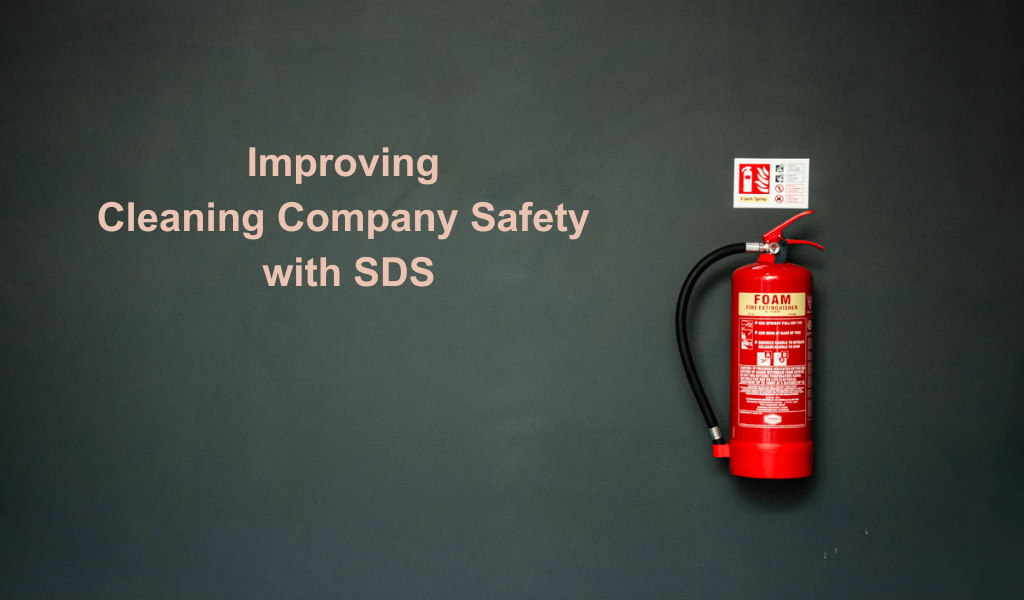Prioritize your commercial cleaning company safety protocols by making it easy to access Safety Data Sheets (SDS).
No matter how careful you are, there’s always room to improve on your commercial cleaning company safety protocols. Even when your team follows safety standards to the letter, accidents are waiting to happen.
It’s impossible to predict every possible situation. And even if you could control every move your team makes, you still can’t account for people outside your organization. Clients bump into and knock over bottles of cleaning products. Someone grabs the wrong cleaner when your team isn’t there and they don’t dilute it. A heavy storm may flood the basement where your supplies are, leading to a leak in cleaning products.
In all these situations, and so many more, best practices for cleaning company safety indicate that preparedness is the secret to preventing a minor accident from turning into a catastrophe.
Don’t let accidents or injuries hobble your cleaning team. Learn more today with a discovery call and find out how to make your cleaning operation more efficient, cost effective, and safer for everyone!
What is an SDS?
Before we get into the context of cleaning company safety protocols, let’s talk about Safety Data Sheets, or SDS. You may know these as Material Safety Data Sheets, or MSDS. OSHA requires that a Safety Data Sheet be available for every chemical you use. These can be physical or digital versions, as long as they are easily accessible.
The MSDS and SDS convey the same information; the SDS is an updated and standardized version of the MSDS. That makes it much easier for employees, the public, and first responders to glance at the sections most important for their needs.
There are numerous details provided on any SDS. They include 16 sections that cover “the properties of each chemical; the physical, health, and environmental health hazards; protective measures; and safety precautions for handling, storing, and transporting the chemical,” according to OSHA.
That might seem a little overwhelming, but there’s good news. Because these are standardized, it’s easy to skip to the section of any SDS to get the information you want.
As an example, here’s the first page of an SDS for Simple Green All-Purpose Cleaner:

Note the circled emergency phone number. It’s never a bad idea to make sure these are highlighted or made clear in some way. Also, note Section 4: First-Aid Measures. This section provides information on how to handle inhalation, skin contact, eye contact, ingestion, common symptoms, and whether immediate medical attention is indicated. You can review the entire SDS for this product here.
Another important section is Section 6: Accidental Release Measures. This SDS comes from The Clorox Company and refers to Clorox Regular-Bleach:

A simple tool to improve cleaning company safety
Every cleaning chemical you purchase comes with an SDS. Even hand soaps and environmentally-friendly products have an SDS. There are several ways to get an SDS for your products.
If an SDS isn’t included in your order, you can ask your distributor for a physical copy. Similarly, every manufacturer offers free downloads or PDF versions of their SDS. As an example, you can access SDS from P&G Professional right from their webpage. From there, you can search for an SDS by keyword or by perusing their brands and products.
For a broader search, Chemical Safety offers a global SDS database where you can search for a product by product name, manufacturer, or CAS number. These are helpful, certainly. But you won’t have a lot of time to go look up websites and search a database in the middle of an emergency.
Clearly, an SDS has valuable safety information. However, just like searching the web, it’s not very practical for your team to walk around with a stack of these for every cleaning product they may use. Nor is it likely that your customers or the public will have them.
There is, however, a solution: QR codes.
Because an SDS can be physical or digital, solutions like Janitorial Manager make it easy to attach an SDS to a QR code. A quick scan and your team, customers, or the public can view critical information.
Should a cleaning product splash on someone’s skin, first aid information is easily available. If there’s a spill, you can determine in seconds if there’s a need to evacuate the space or simply use an absorbant material.
Do you need eye protection? Full PPE? Is the product flammable? Biodegradable? Water soluble? All this information is available on the SDS.
While your cleaning company safety protocols are all important, it’s still vital to make them as comprehensive as possible. Anytime you can improve access to important information, everyone involved takes a step closer to personal safety.
Improve communications and stay on top of safety protocols. Schedule a free call with Janitorial Manager to learn how mobile-friendly janitorial software can help your team improve safety for everyone.


